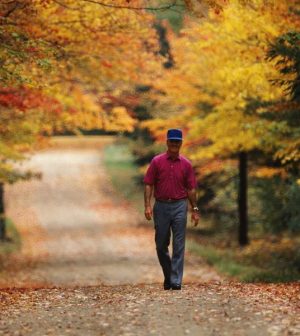- How Daily Prunes Can Influence Cholesterol and Inflammation
- When to Take B12 for Better Absorption and Energy
- Epsom Salts: Health Benefits and Uses
- See What Saffron Can Do for Sleep and Heart Health
- 6 Common Mistakes to Avoid Before Your Physical
- Can Sweating Really Help You Beat a Cold?
- Strengthening Your Relationship: Practical Strategies
- Skip Storing This Everyday Product in the Fridge Door
- Green Tea + B3 Pairing May Boost Brain Health
- Navigating Your Midlife Crisis: Embracing New Possibilities
One Reason It’s Hotter in Poorer Neighborhoods: Fewer Trees

Poor neighborhoods in the United States have fewer trees and are hotter than richer neighborhoods, new research shows.
In the study, the researchers assessed tree cover in the 100 largest urban areas of the country.
In nine out of 10 communities, there was less tree cover in low-income areas than in high-income areas. On average, low-income neighborhoods had about 15% less tree cover and were 1.5 degrees Celsius hotter (2.7 degrees Fahrenheit).
“We had expected low-income and minority neighborhoods to have less tree cover and so be more at risk during summer heat waves, but we were still surprised and troubled at how widespread this tree inequality was, with 92% of communities having lower tree cover in low-income than in high-income areas,” according to researcher Robert McDonald of The Nature Conservancy in Arlington, Va., and his colleagues.
The greatest disparities were in the Northeast, where low-income neighborhoods in some urban areas had 30% less tree cover and were 4°C hotter (7.2 degrees F) than high-income neighborhoods.
The researchers also found that neighborhoods with higher percentages of people of color had less tree cover and hotter summer temperatures.
In total, low-income neighborhoods had 62 million fewer trees than comparable high-income neighborhoods, according to the study published online April 28 in the journal PLOS ONE.
A $17.6 billion investment in tree planting and natural regeneration could correct this disparity between low-income and high-income areas and benefit 42 million people, the researchers estimated.
Besides providing cooling and reducing the impact of heat waves, there’s growing evidence that tree cover in cities has a number of health benefits for people, including lower levels of air pollution, better heart function and improved mental health, the study authors added in a journal news release.
More information
Cities4Forests has more on the benefits of urban forests.
SOURCE: PLOS ONE, news release, April 28, 2021
Source: HealthDay
Copyright © 2026 HealthDay. All rights reserved.










